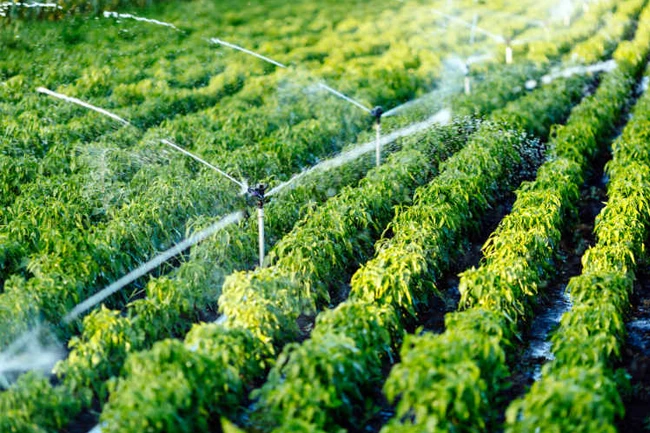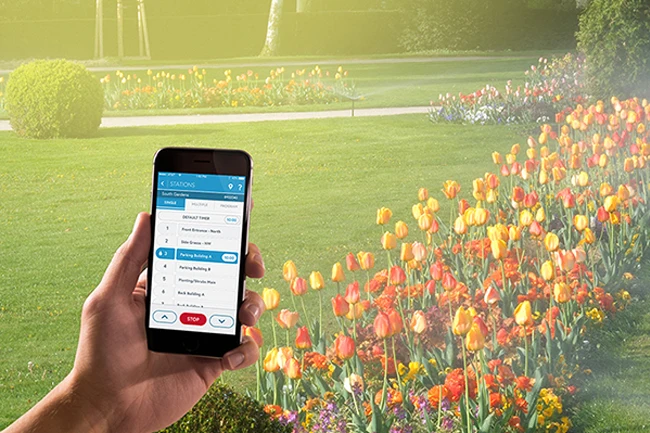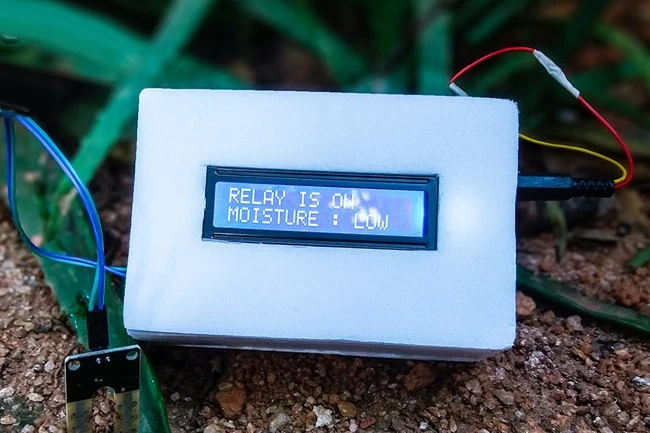Welcome to the future of gardening! In a world where technology seamlessly blends with nature, smart gardening emerges as a game-changer. This comprehensive guide from Desert Rose Landscaping – a leading landscaping agency in Muscat will walk you through the exciting realm of automatic irrigation systems, transforming your garden into a lush and vibrant oasis.
1. WHAT IS SMART GARDENING?
Smart gardening is like having a high-tech helper for your plants. Imagine a system that automatically waters your garden without any effort from you. Smart gardening involves leveraging advanced technologies for efficient plant care. An integral part of this approach is the use of automatic watering systems, which employ sensors to gauge soil moisture levels and deliver precise amounts of water. They even have timers to make sure your garden gets watered at the perfect times, saving water and keeping your plants healthy.
But it’s not just about watering. Smart gardening also involves using sensors to keep an eye on things like sunlight, temperature, and humidity. This information helps you make smart choices about where to place your plants and how to take care of them. It’s like having a personal assistant for your garden, making gardening easier and more efficient.
2. WHY AUTOMATIC IRRIGATION?
Automatic irrigation simplifies gardening by ensuring your plants get the right amount of water at the right time, saving you time and promoting healthier plant growth.
Importance of Watering Efficiency
Watering efficiency is crucial for several reasons, ranging from environmental sustainability to plant health and resource conservation. To flourish, plants require the proper quantity of water. While underwatering might impede growth, overwatering can cause diseases such as root rot. Efficient watering ensures that plants receive the appropriate amount of water, promoting healthy growth and resilience. Automatic irrigation systems streamline the watering process, promote water efficiency, and contribute to healthier and more vibrant gardens. The technology allows for a level of control and adaptability that is challenging to achieve with manual watering methods.
Impact on Plant Health and Growth
Automatic irrigation systems create an environment conducive to plant health and growth by providing consistent, precise, and timely watering. These systems not only benefit the plants but also contribute to a more efficient and enjoyable gardening experience.
Time and Labor Savings
Automatic irrigation systems provide a more efficient and convenient way to ensure plants receive the right amount of water without the continuous manual effort associated with traditional watering methods. This time-saving aspect allows gardeners to focus on other aspects of garden care and enjoy a well-maintained landscape with less physical labor.
3. TYPES OF AUTOMATIC IRRIGATION SYSTEMS
Drip Irrigation

Drip irrigation is an efficient method of watering plants by delivering water directly to the base of each plant through a network of tubes, pipes, valves, and emitters. Unlike traditional irrigation methods that involve overhead watering or surface flooding, drip irrigation is a targeted approach that minimizes water wastage and promotes water efficiency. Drip irrigation is widely used in agriculture, landscaping, and home gardens, offering an efficient and sustainable way to meet the water needs of plants.
Sprinkler Systems

A sprinkler system is an irrigation system that uses a network of pipes, valves, and sprinkler heads to distribute water over a designated area, providing systematic and controlled watering for lawns, gardens, and landscapes. Sprinkler systems are commonly employed in commercial, residential, and agricultural settings. While both drip irrigation and sprinkler systems are effective watering methods, the choice between them often depends on factors such as the type of plants, landscape layout, and specific watering requirements.
Smart Irrigation Controllers

Smart irrigation controllers, also known as smart sprinkler controllers, are advanced devices that use technology and connectivity features to optimize and automate the watering of landscapes. These controllers leverage data from various sources, such as weather forecasts and soil moisture sensors, to adjust watering schedules and durations, making irrigation more efficient and tailored to the specific needs of plants. Smart irrigation controllers offer a modern and intelligent approach to landscape irrigation, combining convenience, efficiency, and environmental consciousness. They provide users with greater control and visibility into their irrigation systems, ultimately leading to healthier landscapes and resource conservation.
Soil Moisture Sensors

Soil moisture sensors are devices designed to measure the water content in the soil. These sensors provide valuable information about the soil’s moisture levels, helping gardeners, farmers, and researchers make informed decisions about irrigation, plant health, and water management. Soil moisture sensors are used in various applications, from agriculture and landscaping to environmental monitoring. Soil moisture sensors are crucial in promoting water conservation, optimizing irrigation practices, and maintaining healthy soil conditions across various applications. Their integration with modern technologies allows for more precise and efficient water management strategies.
4. ASSESSING YOUR GARDEN’S NEEDS FOR SMART GARDENING
Garden Size and Layout
The design and installation of an automatic irrigation system depend significantly on the size and layout of the garden. Different garden sizes and layouts may require specific considerations to ensure that the irrigation system effectively meets the needs of the plants while optimizing water usage. In summary, the size and layout of a garden play a pivotal role in determining the most appropriate automatic irrigation system. Customization, efficiency, and sustainability are key factors considered in the design and installation process to ensure the system meets the unique needs of the garden.
Types of Plants
Automatic irrigation systems can be customized based on the specific water needs of different types of plants. The types of plants in a garden or landscape influence the design, layout, and scheduling of the irrigation system. In summary, the types of plants in a garden influence the design and configuration of an automatic irrigation system. Customization based on watering requirements, root depth, and plant types ensures that each plant receives the right amount of water, promoting healthy growth while conserving water resources.
Soil and Climate Considerations
Automatic irrigation systems need to be tailored to the specific soil and climate conditions of a given location to ensure efficient water use and optimal plant health. In short, automatic irrigation systems should be designed with careful consideration of both soil and climate conditions. Customization based on these factors ensures that the irrigation system provides effective water delivery, minimizes water waste, and supports the health of plants in diverse environmental settings.
5. CHOOSING THE RIGHT COMPONENTS FOR AUTOMATIC IRRIGATION SYSTEM
Selecting the appropriate irrigation system and components
Selecting the appropriate automatic irrigation system and components involves considering various factors such as the size and layout of your garden, the types of plants you have, soil conditions, climate, water source, and your specific preferences. The factors are:
● Garden Size and Layout
● Plant Types and Watering Needs
● Evaluate Soil Conditions
● Climate and Weather Patterns
● Water Source
● Budget Considerations
● Smart Technology Integration
● Installation and Maintenance
● Environmental Considerations
● Adaptability and Expansion
6. PLANNING THE SMART IRRIGATION INSTALLATION PROCESS
Mapping Out the Garden
Create a comprehensive plan by mapping your garden, and identifying key areas and potential challenges.
Determining Watering Zones
Divide your garden into watering zones based on plant types, sun exposure, and water requirements.
Calculating Water Pressure and Flow
Ensure your irrigation system is optimized by calculating water pressure and flow, preventing issues such as uneven watering.
7. STEP-BY-STEP SMART GARDENING INSTALLATION GUIDE
i. Preparing the Soil
Prepare your garden bed for installation, addressing soil quality and making it conducive to efficient water distribution.
ii. Installing Main Lines and Sublines
Follow a step-by-step process to install the main lines and sublines, ensuring proper water flow throughout the system.
iii. Placing Emitters or Sprinkler Heads
Position emitters or sprinkler heads strategically to achieve optimal coverage for each plant or zone.
iv. Connecting to Smart Controllers
Integrate your irrigation system with smart controllers, allowing for remote access and automated scheduling.
8. TROUBLESHOOTING AND MAINTENANCE TIPS
● Common Issues and Solutions
Identify and troubleshoot common problems such as clogs, leaks, or malfunctions, ensuring your system operates smoothly.
● Regular System Checks
Establish a routine for checking your system, catching potential issues early, and preventing damage to your garden.
● Seasonal Adjustments
Learn how to make seasonal adjustments to your irrigation system, accounting for changes in temperature, rainfall, and plant water requirements.
9. AUTOMATIC IRRIGATION SYSTEM: DIY VS. PROFESSIONAL INSTALLATION
The choice between DIY and professional installation of an automatic irrigation system depends on various factors, including your level of expertise, the complexity of the system, the size of your garden, and your budget. To say, both DIY and professional installation have their merits, and the choice depends on your specific circumstances. If you have the skills, time, and interest, a DIY approach can be rewarding. However, if you want a more efficient and guaranteed installation, especially for complex systems, professional assistance may be the better option
10. FUTURE TRENDS IN SMART GARDENING
Smart gardening continues to evolve with advancements in technology and a growing interest in sustainable and efficient gardening practices. Several trends are shaping the future of smart gardening, enhancing the way individuals approach gardening and landscaping. Here are some key future trends in smart gardening:
● Integration of Artificial Intelligence
● Enhanced Connectivity and IoT Integration
● Advanced Soil Monitoring and Management
● Precision Watering Systems
● Robotics in Gardening
● Augmented Reality (AR) for Garden Planning
● Voice-Activated Gardening Assistants
● Green Energy Integration
As technology continues to advance, these trends in smart gardening are expected to reshape the way individuals approach gardening, making it more accessible, sustainable, and enjoyable. Gardeners can look forward to an increasingly interconnected and technologically enhanced gardening experience. If you are planning to i nstall automatic irrigation systems in Oman, then Desert Rose design and landscaping solutions can be the right fit for you. With ample experience and being the best in Oman, we can assure you of quality service and can assist you with all your gardening or landscaping requirements.

